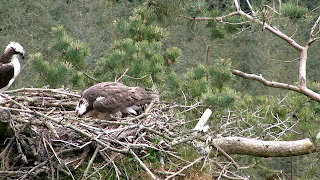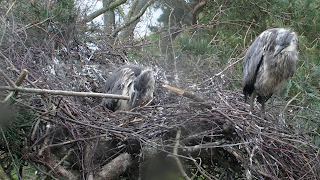 |
| This years osprey brood not long after hatching |
Staring at the empty nest, we are reminded that these magnificent birds are only really, truly ‘our Tweed Valley Ospreys’, for part of the year, as they will be spending the next six months in Africa. I wonder do the local people in Africa refer to ‘their birds’ returning?
In reality, we share the pleasure of this international family. It should be a happy time to see the birds have left after another successful season, another brood of chicks raised and off to make their way in the world. But for the volunteers and staff at the osprey centres, it is always tinged with a slight sadness to see them go and we hope that the adult birds make it back safely next spring.
All that remains is to sincerely thank all of the volunteers that have staffed the centres this season. Some of the volunteers have been faithful to the Tweed Valley Osprey Project since the very start. Also, each year we manage to recruit a few new volunteers to the project and we are very grateful for their support and their enthusiasm to share the news about the osprey antics with visitors.
It is my last day for working on the osprey project for this year and I hope that everyone has enjoyed hearing the weekly osprey family updates.
Thank you for supporting the Tweed Valley Osprey Project,
Until next year, bye for now,
Di Bennett,
Tweed Valley Osprey Officer.


.jpg)














play+dead.jpg)
.jpg)


















